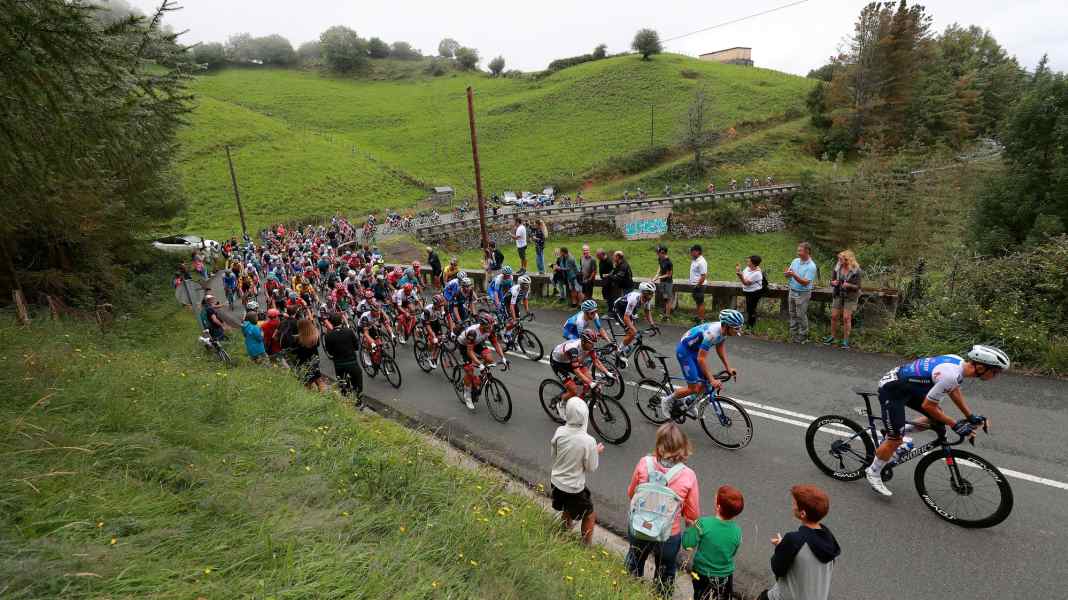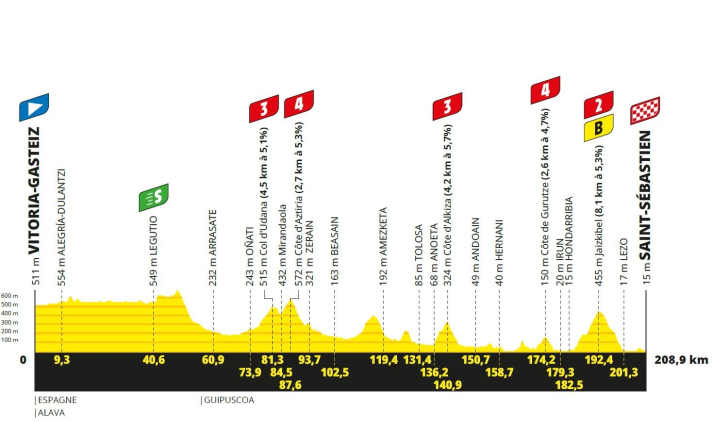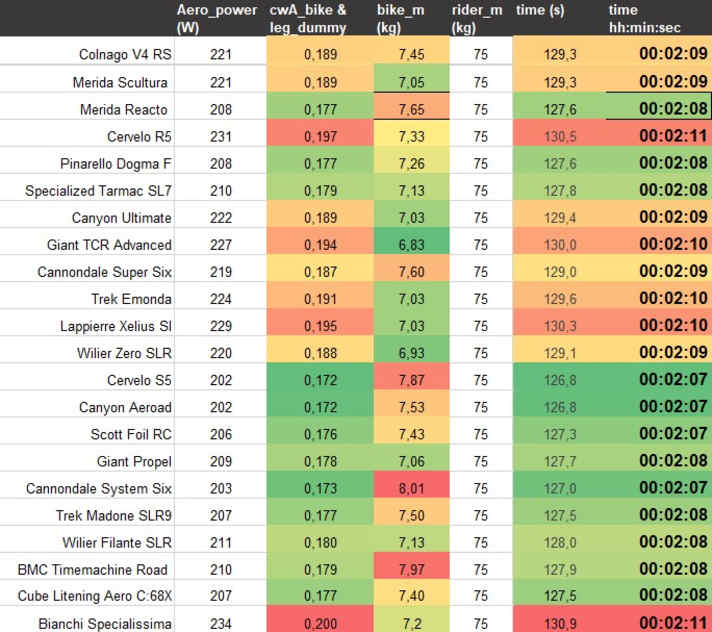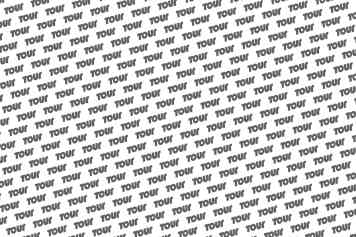
Tour de France 2023 - Stage 2: Vitoria-Gasteiz - San Sebastian | 208,9 Kilometres

Day two of the 2023 Tour de France is a carbon copy of day one, with the hills less sharp but higher. The Jaizkibel, known from Clasica San Sebastian, is the last obstacle on the way to the finish. From the top of the Jaizkibel, the course drops 16.5 kilometers to the finish.
Because the Jaizkibel remains just under eight percent grade at the top and is longer than the previous day’s hills, it is unlikely that a puncheur will be able to break away. Even breakaways probably have bad cards. So it could come to a sprint of the thinned out field of favorites at the finish in San Sebastian - where yellow can be defended. But it is also conceivable that a puncheur will break away from the thinned-out leaders. We simulate an attack 2,000 meters before the finish to clarify to what extent the technique could tip the scales today in the fight for stage victory and the yellow jersey.
Number of the day: 4.1 seconds
Is the calculated lead of the fastest bike in the peloton in the attack over 2,000 meters. As on the previous day, the aerodynamics again stand out on the second stage of the Tour de France. Canyon Aeroad and Cervelo S5 lead the field of aero bikes by equal margins, but the time gaps to the pursuers are extremely narrow. Small weight differences are meaningless in this final.
The (almost) entire field at a glance

*) The calculations are based on the bikes tested by TOUR in the laboratory and wind tunnel. The bikes at the Tour de France may differ in details. Of course, we have not yet been able to examine last-minute prototypes either.
Our Expert

Robert Kühnen studied mechanical engineering, writes for TOUR about technology and training topics and develops testing methods. Robert has been refining the simulation calculations for years, they are also used by professional teams.
